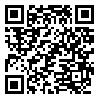BibTeX | RIS | EndNote | Medlars | ProCite | Reference Manager | RefWorks
Send citation to:
URL: http://tumj.tums.ac.ir/article-1-555-en.html
Background: There is a growing interest in understanding the biological effects of time-tested folk medicinal plants including the green leafy vegetables, which supply minerals and vitamins to the diet. Trigonella foenum-graecum L (fenugreek) is a dietary vegetable and there are reports concerning its antinociceptive effects in Iranian traditional medicine. Its seeds are also known for their carminative, tonic, antidiabetic, antineoplastic and restorative properties. These reports and the hypoglycemic effect of fenugreek leaf extract encouraged us to assay fenugreek aqueous extract for cytotoxicity on NIH3T3 mouse fibroblast cells.
Methods: The NIH3T3cell line was purchased from National Research Center for Genetic Engineering and Biotechnology of Iran. The cells were plated in 24-well microtiter plates with DMEM+F12 medium containing 10% fetal calf serum supplemented with 445 mg/L L-glutamine and maintained at 37oC with 5% CO2/95% air. Following a 24-hr incubation period, various concentrations (0.01-20 mg) of the extract to the culture wells. Cell viability was assessed using trypan blue and MTT assays after five days of incubation.
Results: The results show that the IC50 of the fenugreek extract as calculated from the trypan blue and MTT assays were 1.25 and 2.5 mg/mL, respectively.
Conclusions: Our findings, therefore, suggest that the aqueous extract of fenugreek is classified as nontoxic. This observed cytotoxicity is not specific and could be due to membrane disturbances.
| Rights and permissions | |
 |
This work is licensed under a Creative Commons Attribution-NonCommercial 4.0 International License. |





